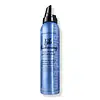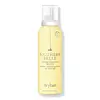What's inside
What's inside
 Key Ingredients
Key Ingredients

 Benefits
Benefits

 Concerns
Concerns

 Ingredients Side-by-side
Ingredients Side-by-side

Water
Skin ConditioningIsobutane
Propane
Polyquaternium-11
Hydrolyzed Soy Protein
HumectantWheat Amino Acids
Skin ConditioningHydrolyzed Amaranth Protein
Skin ConditioningPEG-12 Dimethicone
Skin ConditioningSalix Nigra Bark Extract
Skin ProtectingPanthenol
Skin ConditioningSodium Lactate
BufferingEthylhexylglycerin
Skin ConditioningSodium PCA
HumectantAspartic Acid
MaskingPCA
HumectantArginine
MaskingAlanine
MaskingSerine
MaskingValine
MaskingProline
Skin ConditioningThreonine
Isoleucine
Skin ConditioningHistidine
HumectantPhenylalanine
MaskingCetrimonium Chloride
AntimicrobialTocopherol
AntioxidantVp/Va Copolymer
Laureth-4
EmulsifyingPEG-40 Hydrogenated Castor Oil
EmulsifyingPolyquaternium-4
Glycine
BufferingEthylhexyl Methoxycinnamate
UV AbsorberSodium Hydroxide
BufferingParfum
MaskingLinalool
PerfumingLimonene
PerfumingCitral
PerfumingCitronellol
PerfumingBenzyl Benzoate
AntimicrobialHydroxycitronellal
PerfumingCoumarin
PerfumingHexyl Cinnamal
PerfumingBHT
AntioxidantDisodium EDTA
Potassium Sorbate
PreservativePhenoxyethanol
PreservativeWater, Isobutane, Propane, Polyquaternium-11, Hydrolyzed Soy Protein, Wheat Amino Acids, Hydrolyzed Amaranth Protein, PEG-12 Dimethicone, Salix Nigra Bark Extract, Panthenol, Sodium Lactate, Ethylhexylglycerin, Sodium PCA, Aspartic Acid, PCA, Arginine, Alanine, Serine, Valine, Proline, Threonine, Isoleucine, Histidine, Phenylalanine, Cetrimonium Chloride, Tocopherol, Vp/Va Copolymer, Laureth-4, PEG-40 Hydrogenated Castor Oil, Polyquaternium-4, Glycine, Ethylhexyl Methoxycinnamate, Sodium Hydroxide, Parfum, Linalool, Limonene, Citral, Citronellol, Benzyl Benzoate, Hydroxycitronellal, Coumarin, Hexyl Cinnamal, BHT, Disodium EDTA, Potassium Sorbate, Phenoxyethanol
Water
Skin ConditioningIsobutane
Propane
Hydrolyzed Soy Protein
HumectantCamellia Sinensis Leaf Extract
AntimicrobialRhodiola Rosea Root Extract
EmollientCitrus Junos Seed Extract
AntioxidantCyperus Esculentus Root Oil
MaskingHelianthus Annuus Seed Oil
EmollientPrunus Insititia Seed Oil
EmollientTocopheryl Acetate
AntioxidantPanthenol
Skin ConditioningPvp
Emulsion StabilisingPolyquaternium-4
Laureth-4
EmulsifyingOleth-20
CleansingCetyl Alcohol
EmollientPolyquaternium-11
Parfum
MaskingPEG-40 Hydrogenated Castor Oil
EmulsifyingSodium C14-16 Olefin Sulfonate
CleansingStearyl Alcohol
EmollientCetrimonium Bromide
AntimicrobialEthylhexylglycerin
Skin ConditioningSilicone Quaternium-3
Trideceth-12
EmulsifyingEthylhexyl Methoxycinnamate
UV AbsorberPropylene Glycol
HumectantButylene Glycol
HumectantPentylene Glycol
Skin ConditioningPhenoxyethanol
PreservativeDisodium EDTA
Sodium Hydroxide
BufferingPotassium Sorbate
PreservativeBHT
AntioxidantLinalool
PerfumingAlpha-Isomethyl Ionone
PerfumingWater, Isobutane, Propane, Hydrolyzed Soy Protein, Camellia Sinensis Leaf Extract, Rhodiola Rosea Root Extract, Citrus Junos Seed Extract, Cyperus Esculentus Root Oil, Helianthus Annuus Seed Oil, Prunus Insititia Seed Oil, Tocopheryl Acetate, Panthenol, Pvp, Polyquaternium-4, Laureth-4, Oleth-20, Cetyl Alcohol, Polyquaternium-11, Parfum, PEG-40 Hydrogenated Castor Oil, Sodium C14-16 Olefin Sulfonate, Stearyl Alcohol, Cetrimonium Bromide, Ethylhexylglycerin, Silicone Quaternium-3, Trideceth-12, Ethylhexyl Methoxycinnamate, Propylene Glycol, Butylene Glycol, Pentylene Glycol, Phenoxyethanol, Disodium EDTA, Sodium Hydroxide, Potassium Sorbate, BHT, Linalool, Alpha-Isomethyl Ionone
Ingredients Explained
These ingredients are found in both products.
Ingredients higher up in an ingredient list are typically present in a larger amount.
BHT is a synthetic antioxidant and preservative.
As an antioxidant, it helps your body fight off free-radicals. Free-radicals are molecules that may damage your skin cells.
As a preservative, it is used to stabilize products and prevent them from degrading. Specifically, BHT prevents degradation from oxidation.
The concerns related to BHT come from oral studies; this ingredient is currently allowed for use by both the FDA and EU.
However, it was recently restricted for use in the UK as of April 2024.
Learn more about BHTDisodium EDTA plays a role in making products more stable by aiding other preservatives.
It is a chelating agent, meaning it neutralizes metal ions that may be found in a product.
Disodium EDTA is a salt of edetic acid and is found to be safe in cosmetic ingredients.
Learn more about Disodium EDTAEthylhexyl Methoxycinnamate is an organic compound that provides UVB protection. It often goes by the more common name of octinoxate. It is created from methoxycinnamic acid and 2-ethylhexanol.
Ethylhexyl Methoxycinnamate absorbs UVB rays with wavelengths between 280-320 nm. UV absorbers protect your skin by using chemical reactions to convert UV rays into heat and energy.
UVB (290-320 nm) rays emit more energy than UVA rays. They are capable of damaging DNA, causing sunburns and are thought to be linked to skin cancer.
The state of Hawaii has banned sunscreens containing octinoxate due to its potential impact on coral reefs. More research is needed to bridge gaps in this research. The European Union allows higher levels of octinoxate in sunscreens than the US and Australia.
Ethylhexyl Methoxycinnamate is oil soluble. It is not stable and may lose efficacy when exposed to sunlight.
Learn more about Ethylhexyl MethoxycinnamateEthylhexylglycerin (we can't pronounce this either) is commonly used as a preservative and skin softener. It is derived from glyceryl.
You might see Ethylhexylglycerin often paired with other preservatives such as phenoxyethanol. Ethylhexylglycerin has been found to increase the effectiveness of these other preservatives.
Hydrolyzed Soy Protein is a vegan protein made to mimic hydrolyzed collagen. It is created from soy, or glycine soja.
This ingredient is a humectant, meaning it helps hydrate the skin by binding to water. According to a manufacturer, it is also a great hair conditioner.
Read more about hydrolyzed collagen here.
Learn more about Hydrolyzed Soy ProteinWe don't have a description for Isobutane yet.
Laureth-4 is created by reacting ethylene oxide with Lauryl Alcohol. It is a surfactant and emulsifier.
Surfactants reduce the surface tension of ingredients so they can mix better. Emulsifiers prevent ingredients such as oil and water from separating.
Linalool is a fragrance and helps add scent to products. It's derived from common plants such as cinnamon, mint, citrus, and lavender.
Like Limonene, this ingredient oxidizes when exposed to air. Oxidized linalool can cause allergies and skin sensitivity.
This ingredient has a scent that is floral, spicy tropical, and citrus-like.
Learn more about LinaloolPanthenol is a common ingredient that helps hydrate and soothe the skin. It is found naturally in our skin and hair.
There are two forms of panthenol: D and L.
D-panthenol is also known as dexpanthenol. Most cosmetics use dexpanthenol or a mixture of D and L-panthenol.
Panthenol is famous due to its ability to go deeper into the skin's layers. Using this ingredient has numerous pros (and no cons):
Like hyaluronic acid, panthenol is a humectant. Humectants are able to bind and hold large amounts of water to keep skin hydrated.
This ingredient works well for wound healing. It works by increasing tissue in the wound and helps close open wounds.
Once oxidized, panthenol converts to pantothenic acid. Panthothenic acid is found in all living cells.
This ingredient is also referred to as pro-vitamin B5.
Learn more about PanthenolParfum is a catch-all term for an ingredient or more that is used to give a scent to products.
Also called "fragrance", this ingredient can be a blend of hundreds of chemicals or plant oils. This means every product with "fragrance" or "parfum" in the ingredients list is a different mixture.
For instance, Habanolide is a proprietary trade name for a specific aroma chemical. When used as a fragrance ingredient in cosmetics, most aroma chemicals fall under the broad labeling category of “FRAGRANCE” or “PARFUM” according to EU and US regulations.
The term 'parfum' or 'fragrance' is not regulated in many countries. In many cases, it is up to the brand to define this term.
For instance, many brands choose to label themselves as "fragrance-free" because they are not using synthetic fragrances. However, their products may still contain ingredients such as essential oils that are considered a fragrance by INCI standards.
One example is Calendula flower extract. Calendula is an essential oil that still imparts a scent or 'fragrance'.
Depending on the blend, the ingredients in the mixture can cause allergies and sensitivities on the skin. Some ingredients that are known EU allergens include linalool and citronellol.
Parfum can also be used to mask or cover an unpleasant scent.
The bottom line is: not all fragrances/parfum/ingredients are created equally. If you are worried about fragrances, we recommend taking a closer look at an ingredient. And of course, we always recommend speaking with a professional.
Learn more about ParfumPeg-40 Hydrogenated Castor Oil is derived from castor oil and polyethylene glycol (PEG). It is used as a emollient and emulsifier.
As an emulsifier, it helps prevent ingredients from separating. It also helps make the other ingredients more soluble; it is often used to solubilize fragrances. This increases spreadability and elongates shelf life in a product.
Emollients help soothe and soften the skin. They do this by creating a protective film on your skin. This barrier helps trap moisture and keeps your skin hydrated. Emollients may be effective at treating dry or itchy skin.
This ingredient may or may not be vegan, depending on the source.
Peg-40 Hydrogenated Castor Oil may not be fungal-acne safe. We recommend speaking with a professional if you have any questions or concerns.
Learn more about PEG-40 Hydrogenated Castor OilPhenoxyethanol is a preservative that has germicide, antimicrobial, and aromatic properties. Studies show that phenoxyethanol can prevent microbial growth. By itself, it has a scent that is similar to that of a rose.
It's often used in formulations along with Caprylyl Glycol to preserve the shelf life of products.
We don't have a description for Polyquaternium-11 yet.
We don't have a description for Polyquaternium-4 yet.
Potassium Sorbate is a preservative used to prevent yeast and mold in products. It is commonly found in both cosmetic and food products.
This ingredient comes from potassium salt derived from sorbic acid. Sorbic acid is a natural antibiotic and effective against fungus.
Both potassium sorbate and sorbic acid can be found in baked goods, cheeses, dried meats, dried fruit, ice cream, pickles, wine, yogurt, and more.
You'll often find this ingredient used with other preservatives.
Learn more about Potassium SorbatePropane is a gas derived from petroleum and natural gas. It is used as a propellant.
This ingredient is most commonly used in shaving cream, hair products, and makeup.
Sodium Hydroxide is also known as lye or caustic soda. It is used to adjust the pH of products; many ingredients require a specific pH to be effective.
In small amounts, sodium hydroxide is considered safe to use. However, large amounts may cause chemical burns due to its high alkaline.
Your skin has a natural pH and acid mantle. This acid mantle helps prevent harmful bacteria from breaking through. The acid mantle also helps keep your skin hydrated.
"Alkaline" refers to a high pH level. A low pH level would be considered acidic.
Learn more about Sodium HydroxideWater. It's the most common cosmetic ingredient of all. You'll usually see it at the top of ingredient lists, meaning that it makes up the largest part of the product.
So why is it so popular? Water most often acts as a solvent - this means that it helps dissolve other ingredients into the formulation.
You'll also recognize water as that liquid we all need to stay alive. If you see this, drink a glass of water. Stay hydrated!
Learn more about Water